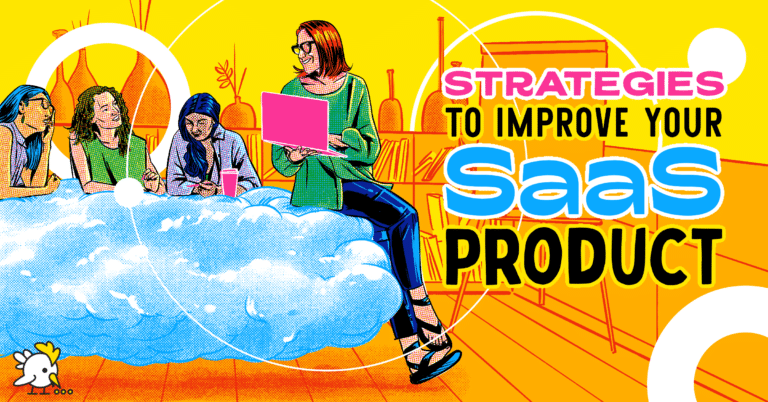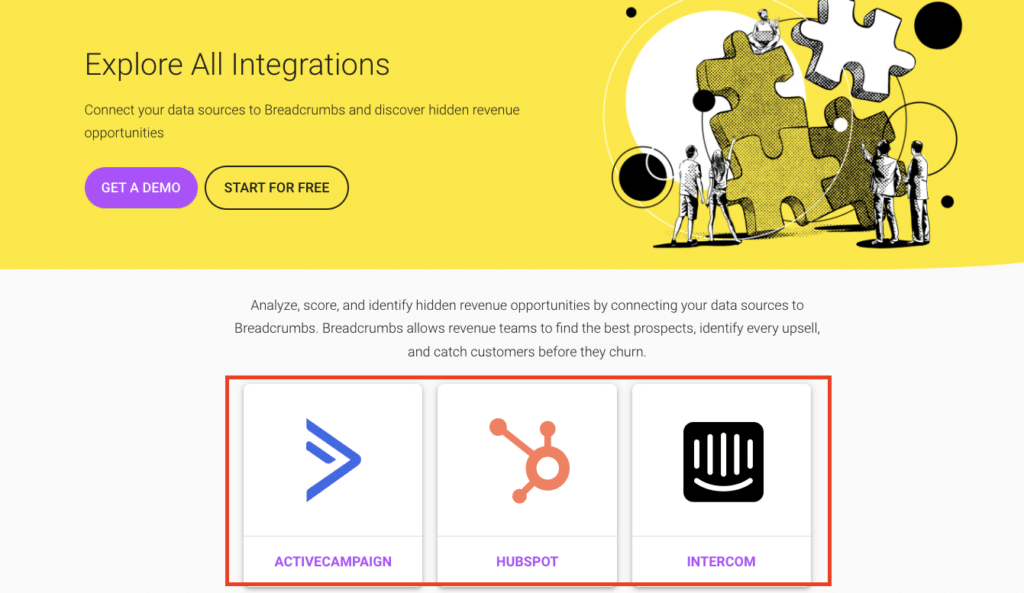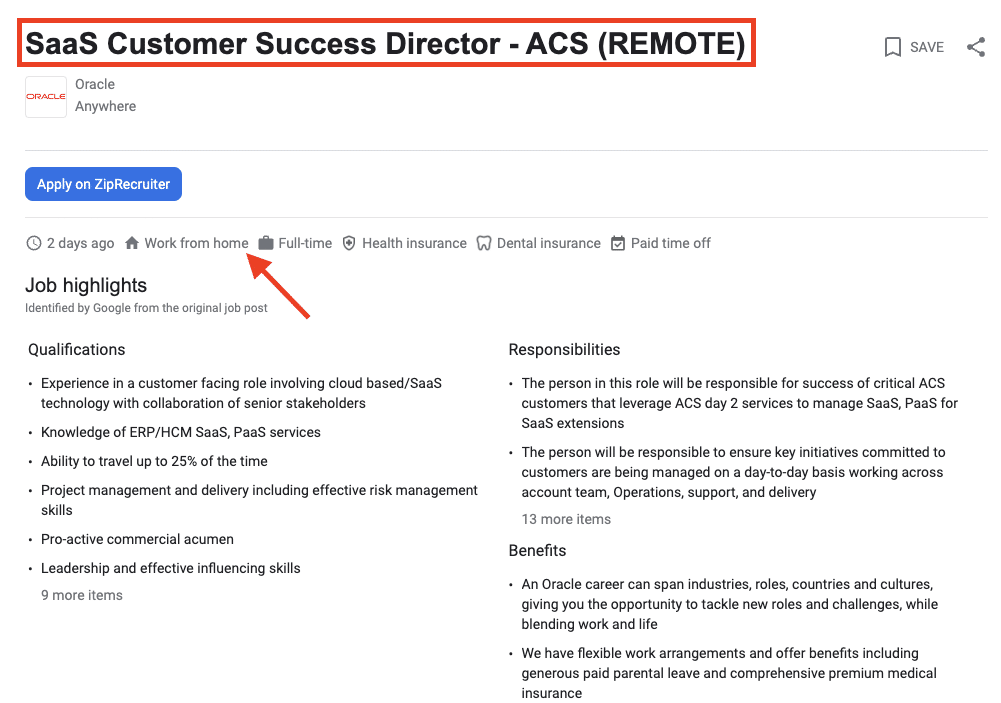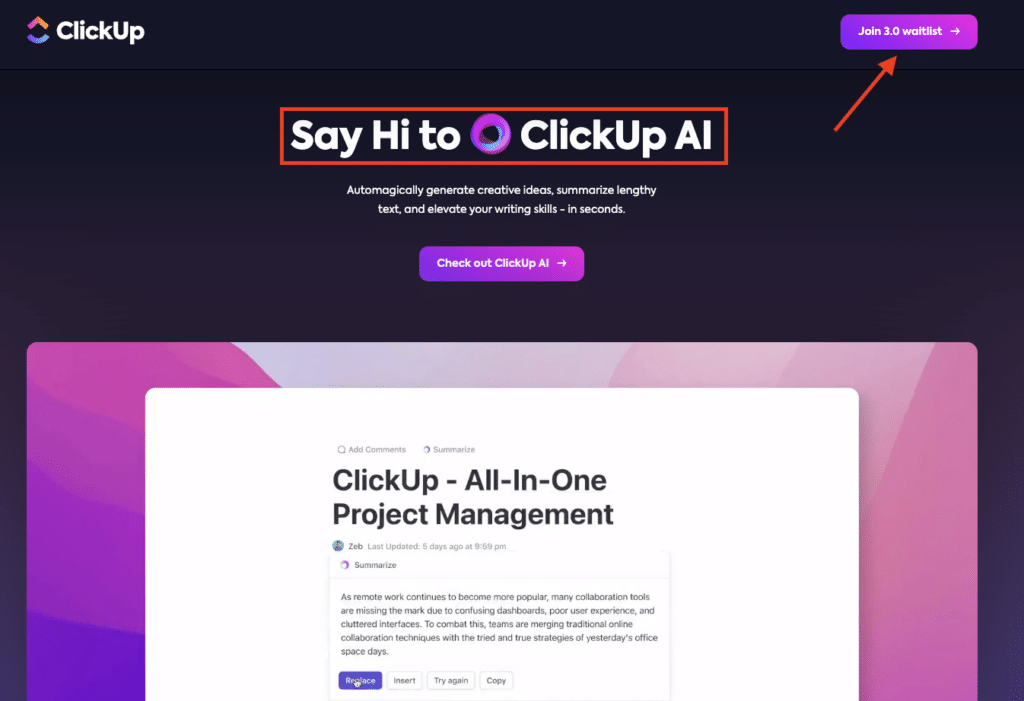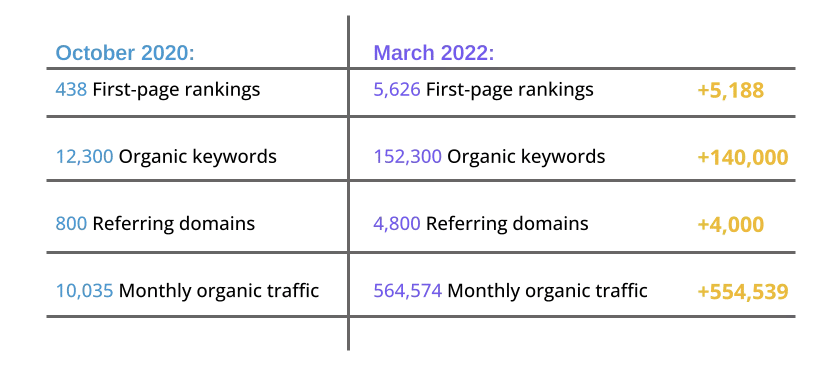It’s no secret that SaaS (Software as a Service) has become one of the most popular business models in recent years. Salesforce. ClickUp. Canva. Breadcrumbs. Wordable. And the list goes on.
With a low barrier to entry and a high potential for scalability, SaaS products are popping up everywhere, skyrocketing this growing market at a projected CAGR of 18.5%.
From project management tools to social media management platforms, there’s a SaaS solution for just about every need. With so many SaaS products on the market, it’s becoming increasingly difficult to stand out and differentiate yourself from the competition.
That’s why it’s crucial to constantly improve and optimize your SaaS product to ensure that it’s meeting the changing needs of your customers. But what’s the secret formula to success?
You’ll want to bookmark this guide. In this blog post, we’ll explore eight SaaS product strategy examples to help you take your SaaS product to the next level and stay ahead of the pack.
So, let’s dive into these neat tips to help you wow your customers and grow your business.
8 Strategies to Improve Your SaaS Product
As a software as a service (SaaS) company, you aim to provide customers with a reliable and efficient product that solves their problems while growing your business.
However, this is easier said than done.
To stay ahead of the pack in a competitive market, you must continuously improve your product. Here are eight strategies for taking your SaaS product to the next level.
1. Leverage data-driven decision-making
As a SaaS company, it’s essential to understand your customer’s behaviors to improve their overall experience and satisfaction. Gaining insights into customer behavior helps you personalize their experience and uncover untapped revenue opportunities.
Breadcrumbs is a lead scoring tool that helps you track and analyze all your SaaS product marketing, sales, and product data to create a data-driven ideal customer profile and build scoring models that predict intent.
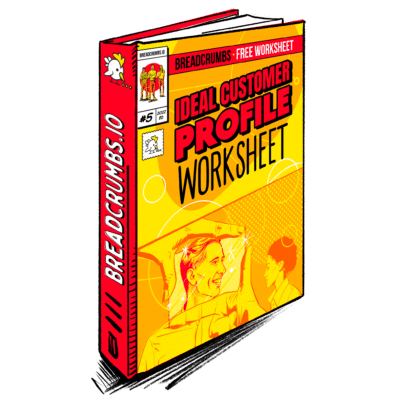
Ebook
Ideal Customer Profile (ICP) Worksheet
Learn how to create an Ideal Customer Profile and build a successful sales strategy with this Ideal Customer Profile (ICP) Worksheet.
This predictive analysis can help you surface new acquisition and expansion opportunities, resolve retention issues, and boost revenue acceleration for your SaaS product.
a. Acquisition
Breadcrumbs can help you automate your sales team to increase conversions. By analyzing customer data from interactions with your products and creating high-performing scoring models, your sales team can focus on warm leads that are likely to convert rather than cold leads that are not yet ready to convert.
b. Expansion
One of the ways you can use Breadcrumbs to improve your SaaS product is to create lead-scoring models that help to personalize the customer’s product experience. Analyze data from interaction with the product, website, and accounts to develop predictions on potential upsells or cross-selling opportunities.
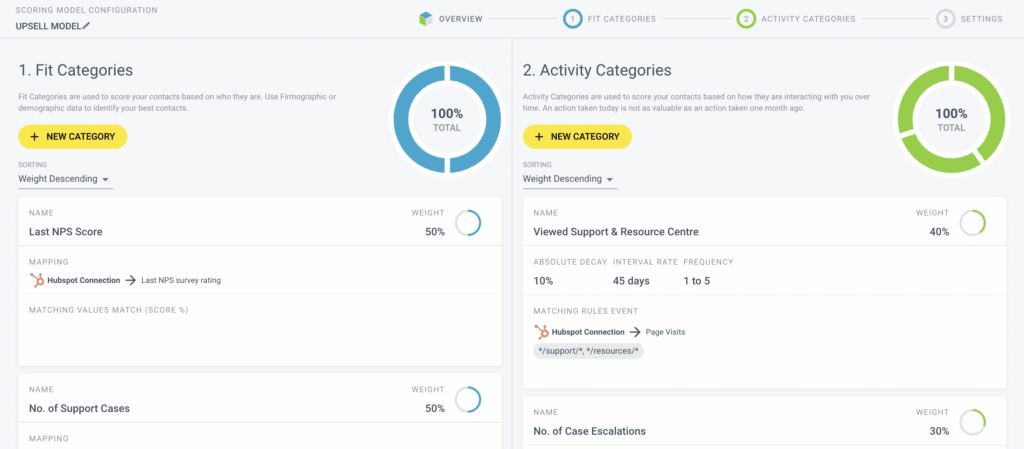
For example, suppose a customer has reached their plan’s threshold. In that case, Breadcrumbs immediately surfaces the upsell opportunity to your sales team so they can offer the next pricing plan.
For cross-selling, Breadcrumbs’ scoring models surface customers who have become advanced users or who otherwise exhibit usage patterns indicating a need for new features.
c. Retention
Another area where you can improve your SaaS product is churn reduction. With Breadcrumbs, you can track your customer’s lifecycle events and identify when they are potentially at risk of churning.
It’s difficult to gauge customer satisfaction without analyzing customer behavior. By understanding customer behaviors, such as not logging in for several days or not utilizing particular product features, you can determine if they are at risk of churning and proactively act before that happens.
Book your free Breadcrumbs demo today and see how it can improve your SaaS product in a few minutes!
2. Focus on usability and user experience
When it comes to improving your SaaS product, there are many factors to consider. The list of potential improvements is endless, from feature updates to bug fixes.
However, usability and user experience should always be at the top of your priority list.
Users have come to expect a seamless and intuitive experience when using any software. If your SaaS product is challenging to navigate or confusing, users will likely become frustrated and abandon it altogether.
That’s why improving usability and user experience is so critical to the success of your product.
So, what steps can you take to improve usability and user experience?
Here are a few tips:
- Simplify your interface: Remove any unnecessary clutter or features that may confuse users. Use clear, concise language and intuitive design elements to guide users through the product.
- Optimize for mobile: As more users access SaaS products on their mobile devices, optimize your product for mobile use. Ensure your product is responsive, has universally appreciated features, and is easily used on smaller screens.
- Provide clear instructions and guidance: Users should never have to guess how to use your product. Provide clear instructions and guidance throughout the user experience and employ usability testing tools to gain crucial insights into user interactions.
Take a page from Wordable’s book and create a separate page on your website that hosts all relevant documentation and trading materials.
You’ll be surprised how much these step-by-step guides and videos help streamline your SaaS usability.
By focusing on improving usability and user experience, you’ll not only make your product more user-friendly but also increase customer satisfaction and retention. In the competitive SaaS landscape, that’s a major win.
3. Improve reliability and performance
Today, customers expect nothing less than top-notch performance and reliability from their SaaS products. A single outage or glitch can lead to a loss of productivity, revenue, and, most importantly, customer trust.
Therefore, improving the reliability and performance of a SaaS product should be at the top of every software company’s priority list.
Investing in infrastructure, optimization, and maintenance can ensure your product is always available and working at peak performance. A few simple steps include optimizing server and database performance, improving load balance, and addressing performance issues.
Here’s a great example from Copy.ai:
Within the email, you can see them take responsibility for the issue, reassure customers they’ve learned from this experience, and have a plan to prevent future occurrences.
As difficult as these scenarios are to navigate, using them as learning experiences will strengthen your product.
While focusing on the reliability of your SaaS product, don’t forget about user authentication and security measures. While they may not be the most exciting topics, they’re another crucial component for building customer trust.
That’s why it’s worth considering incorporating industry-standard authentication protocols like OAuth. This way, users can easily and securely access your product using their existing social media or other accounts without creating a new username and password.
To further prevent any security issues, implement DDoS mitigation techniques to protect against malicious attacks and keep your platform running smoothly.
Investing in reliable security protocols can provide your users a seamless experience while safeguarding your product’s reputation.
For instance, 1Password goes above and beyond to highlight its commitment to security by creating a dedicated landing page on its website to share its security protocols. After all, they do store all of our most sensitive passwords.
Maintaining a good reputation as a SaaS provider is essential, as your customers will significantly impact your product’s success and longevity.
A security breach can lead to customer dissatisfaction, decreased trust, and, ultimately, a damaged reputation. Once your reputation is damaged, it can be incredibly difficult to repair.
Invest in your product’s performance and security to avoid this worst-case scenario. The ‘measure twice, cut once’ approach is worthwhile.
4. Add new features and functionality
Most blogs that give tips for improving SaaS conversions focus on visual aesthetics, promotions, and affiliate partnerships but rarely discuss improving your product.
But today, we have changed that. We’ll also focus on Dave Rietsema’s success story.
He started two companies, the first of which was in 2012, “HR Payroll Software,” which is what its name implies—helps HR teams find the best payroll software.
The second was in 2016 and was called “Applicant Tracking Systems.” Then, in 2021, he had a breakthrough and discovered the synergy between the two businesses. So, he combined these two into what it is today: Matchr.
Adding new features and functionality to your SaaS product is essential for long-term success. It keeps the product fresh, competitive, and valuable to customers.
The example of Dave Rietsema’s transformation shows how combining two businesses, a payroll software and an applicant tracking system (read: functionalities), and continually improving the product can result in a breakthrough creation.
In other words, continually adding better features and improving the SaaS product can lead to new opportunities and increased success.
But if you need help figuring out where to start, you can always ask your customers for feedback. They’re honest about what features are lacking.
Organizations with over 1,000 employees report using over 150 SaaS applications. So, it’s more important than ever to ensure your SaaS product seamlessly integrates with the popular platforms and tools your target customers use.
For example, Breadcrumbs integrates with the most popular CRM platforms to help you discover hidden revenue opportunities without jumping through a million hoops.
These added integration features will increase the value of your product, reduce friction during adoption, and make it easier for customers to incorporate your solution into their existing workflows.
5. Start a customer success program
Growing your SaaS product is about more than just making new sales. It’s also about retaining your current customers and guaranteeing they use your product to its full potential.
SaaS is a highly competitive market with ever-growing demands and increasing customer expectations. And since you operate on a subscription model, you must continually earn your customers’ loyalty and trust.
But if your users struggle to adopt your product, experience UX issues, or can’t measure your product’s positive impact on their workflows, they’re more likely to cancel their subscription.
The result? Higher customer churn and lost revenue.
That’s where a customer success program comes into play. By helping your customers achieve their desired outcomes and get the most value from your product, you can increase retention rates and reduce churn.
Hire a dedicated customer success team to help customers achieve their goals using your SaaS product.
The best part? These roles can be remote jobs, giving you access to a global talent pool.
Here’s a recent example of Oracle hiring a remote SaaS Customer Success director:
To establish a successful customer success program for your SaaS business, focus on these six key components:
- Personalized onboarding
- Success planning
- Regular check-ins (monthly or quarterly)
- Self-service education (webinars, tutorials, and other educational materials)
- Top-notch customer support
- Continuous feedback loops
You can improve the overall user experience by providing excellent customer support and helping customers feel more confident and satisfied with your product.
And happy customers will spend more money on your product, improve retention rates, and boost word-of-mouth referrals.
6. Invest in scalability
Artificial intelligence (AI) is taking the world by storm. The latest headlines include ChatGPT, Microsoft, Google, Slack, and ClickUp.
Why? By incorporating AI and automation capabilities into your product, you can help customers streamline processes, save time, and make better decisions.
Adding these features can increase the perceived value of your product and drive more interest from potential customers.
Take a look at what ClickUp is doing with AI. In ClickUp 3.0, customers can access AI tools that automatically generate ideas and summarize the text with a button click.
Staying on top of recent trends is crucial for the success of any business, and this is especially true for SaaS companies. With the rapid advancements in technology, trends can quickly become outdated. And companies that fail to keep up risk becoming obsolete.
Keep your competitors from pulling ahead. Failure to stay ahead of the curve means losing out on future scalability opportunities. Invest in these trends early on to gain a competitive advantage by widening the gap between yourself and the competition.
7. Double down on content marketing
Have you heard the saying “content is king”? Well, it holds true for any SaaS business looking to scale quickly.
We all know that expanding your marketing efforts can attract new customers and increase adoption rates. Your strategy might include investing in targeted advertising campaigns and leveraging social media to reach potential customers. You might also have partnered with other businesses to promote your product.
But what about organic search? With 68% of online experiences starting with a search engine, you’re missing out on a significant piece of the pie. It’s the perfect opportunity to capture low-hanging fruit.
Start by developing a solid content marketing strategy that focuses on educating potential customers about industry trends, best practices, and the value of your SaaS product.
Write blog posts, whitepapers, case studies, and other resources to establish your company as a thought leader in your industry. This content can help drive organic traffic to your website, generate leads, and increase brand awareness among your target audience.
I know what you’re thinking. There’s no way this SaaS product strategy works. Well, it does—look at what monday.com has to say about content marketing: “By far the best decision we’ve made.”
In the first three months, monday.com increased blog traffic by 1,570%. And if you zoom out even further, look at what they’ve accomplished in less than two years:
These are seriously amazing results. But what if writing isn’t your forte? Don’t worry. It’s very common for SaaS businesses to outsource content marketing to experts.
Codeless, an SEO and content production agency, is the magic maker behind monday.com’s success. Through SEO, content, and PR, Codeless delivers long-term ROI.
But if you’re on a limited budget and want to get your feet wet, tap into free tools like an AI writer that can help you write marketing copy for your blog in seconds. Say goodbye to writer’s block for good and generate highly relevant content that converts.
Start your content creation process today because your competition isn’t waiting around.
8. Offer a free demo to drive user engagement and conversion
Adding a free demo to your SaaS product strategy can be a powerful way to drive user engagement and conversion. You provide potential customers with a firsthand experience of your SaaS product, allowing them to see its value and potential impact on their business.
This strategy increases user engagement, builds trust, and ultimately drives conversions, leading to the growth and success of your SaaS product in any niche, including pest control software.
- Showcase the value. Offer potential customers a hands-on SaaS product experience with a free demo. Showcase critical features addressing their pain points to demonstrate your product’s value. Show them how your product solves challenges and enhances workflows.
- Easy access and usability. Make the demo user-friendly and easy to access. Allow users to navigate and experience core functionalities smoothly. This encourages effortless exploration and understanding of your product.
- Personalized experience: Tailor the demo for each customer’s needs. Show how your SaaS product solves their challenges and adds value to their business. This approach highlights direct benefits to their specific use cases.
Wrapping up
And there you have it, folks. From analyzing user feedback to building a library of high-quality content, there’s no shortage of SaaS product strategy examples to make your product more valuable. And we’ve only scratched the surface.
Remember, the key to success is always to put your users first. By understanding their needs and pain points, you can make informed decisions about improving your product and creating a better user experience.
So, implement these strategies and see what works best for your business. Keep testing and iterating until you find the right features, pricing, and customer support to help your SaaS product thrive.
With these tips (and real-world examples), you’ll be well on your way to creating a product your customers love and can’t live without.
Try Breadcrumbs for free today to experience firsthand how it can revolutionize your decision-making process, close more deals, and improve your SaaS product in a highly competitive landscape.
